How to Grow Peanuts: Step-by-Step Guide for Home Gardeners
- February 28, 2024
- 0 comment
Peanuts, despite their name, are not nuts but legumes that grow underground. They are a popular crop due to their nutritional value, versatility in cooking, and relatively easy cultivation process. Here’s a comprehensive guide to help you grow peanuts in your own garden.
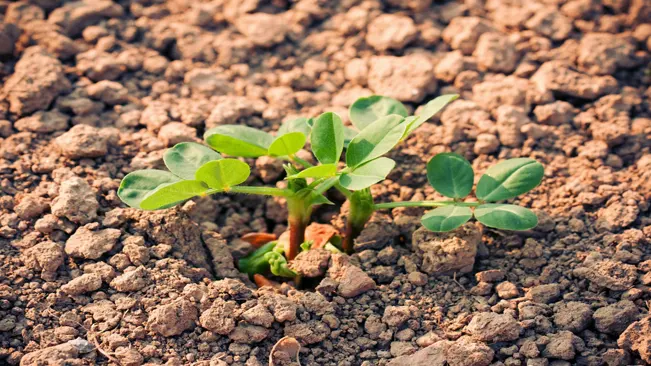
Nutritional Benefits of Peanuts
| Benefit | Description |
|---|---|
| Nutrient-Rich | Peanuts are packed with essential nutrients including protein, healthy fats, vitamins, and minerals. |
| Heart Health | The monounsaturated and polyunsaturated fats in peanuts can help lower bad cholesterol levels, reducing the risk of heart disease. |
| Protein Source | High in protein, peanuts are an excellent plant-based protein source, making them great for vegetarians and vegans. |
| Energy Boosting | Peanuts have a good balance of protein, fat, and fiber, providing a sustained energy source. |
| Weight Management | Peanuts can promote satiety and help in controlling appetite, aiding in weight management when consumed in moderation. |
| Antioxidants | Rich in antioxidants like resveratrol, peanuts can help combat oxidative stress and reduce the risk of chronic diseases. |
| Blood Sugar Control | The low glycemic index and the presence of manganese in peanuts help in regulating blood sugar levels. |
| Skin Health | Peanuts contain biotin and antioxidants, which are beneficial for skin health and can promote a healthy complexion. |
| Source of Fiber | Peanuts contain dietary fiber which is important for digestive health and regular bowel movements. |
| Mineral Rich | They are a good source of minerals such as magnesium, phosphorus, and potassium, essential for various bodily functions. |
Planting Peanuts
Choosing the Right Location
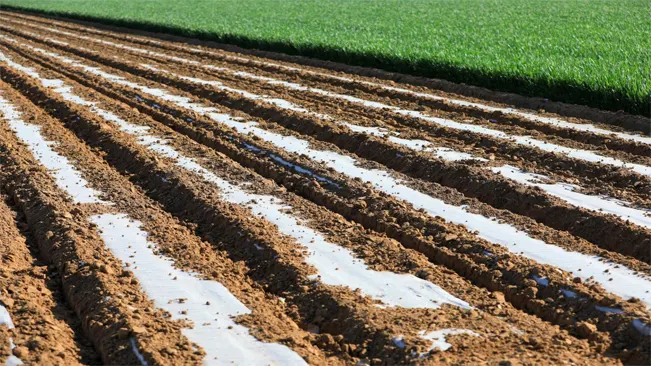
- Climate Considerations:
- Warmth: Peanuts require a warm climate to grow effectively. They need a long growing season, typically around 120 to 150 days of warm weather. This makes them suitable for regions with a long, warm, and frost-free season.
- Sunlight: These plants thrive in full sunlight. They need a location that receives ample sunshine throughout the day, as sunlight is crucial for their growth and the development of the peanuts underground.
- Soil Requirements:
- Type of Soil: Sandy loam soil is ideal for peanut cultivation. This type of soil is a mix of sand, silt, and clay, offering good drainage and aeration. Good drainage is essential as peanuts are prone to rot in waterlogged conditions.
- Soil pH: The optimal soil pH for peanuts is slightly acidic to neutral, ranging from 5.9 to 7.0. Testing the soil pH before planting is beneficial. If necessary, amendments can be made to bring the soil to the desired pH level.
Planting Time
- Last Frost Date: The primary consideration is the last frost date in your area. Peanuts should not be planted until the danger of frost has passed. Frost can damage or kill young peanut plants. This date varies depending on geographic location.
- Soil Temperature: Peanuts require warm soil for germination and growth. The ideal soil temperature for planting peanuts is at least 65°F (18°C). Planting in soil that is too cool can lead to poor germination. You can use a soil thermometer to check the temperature at about 1-2 inches deep.
Soil Preparation
Tilling the Soil
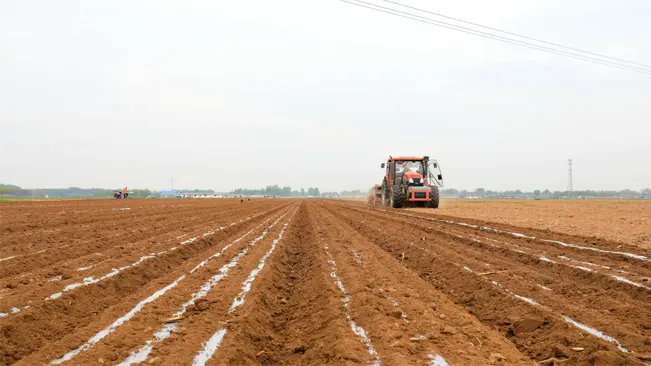
- Purpose: Tilling involves turning over and breaking up the soil. This process serves several purposes: it aerates the soil, improves drainage, and breaks up compacted layers, making it easier for plant roots to grow.
- Depth: For peanuts, the soil should be tilled to a depth of 6 to 8 inches. This depth is optimal for peanut root development and helps ensure that the soil is loose enough for the peanuts to grow and expand underground.
- Tools: Common tools for tilling include a rototiller, garden fork, or spade. The choice of tool can depend on the size of the planting area and the soil’s existing condition.
Sowing
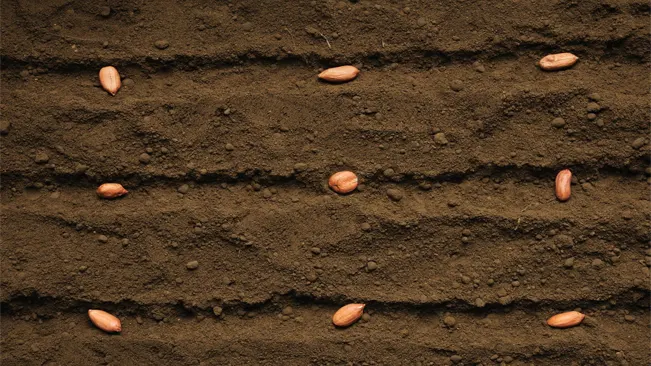
- Depth and Spacing: Plant the peanuts about 2 inches deep. This depth is sufficient to allow the peanut seeds to root firmly while not being so deep that they struggle to emerge. Space the seeds 6 to 8 inches apart, ensuring each plant has enough room to grow.
- Row Spacing: Rows should be spaced 24 to 36 inches apart. This spacing allows for adequate air circulation and ease of access for cultivation and harvest.
- Watering After Planting: Water thoroughly after planting. This initial watering is crucial to settle the soil around the seeds and provide the necessary moisture for germination. However, be careful not to overwater, as peanuts do not thrive in waterlogged soil.
Caring for Peanut Plants
Watering
Peanuts are relatively drought-tolerant, but adequate and timely watering is crucial, especially during certain growth stages:
- Consistency: Providing 1 to 1.5 inches of water per week is ideal. The key is consistency; erratic watering can stress the plants and affect yield.
- Critical Stages: The most critical time for watering is during flowering and pod development. Inadequate water during these stages can lead to poor pod fill.
- Method: Use drip irrigation or a soaker hose to deliver water directly to the roots, minimizing leaf wetness and the risk of fungal diseases.
- Monitoring: Check soil moisture regularly. The soil should be moist but not waterlogged. Overwatering can lead to root rot, a common problem in poorly drained soils.
Fertilization
Peanuts are unique in their fertilization needs due to their ability to fix nitrogen from the air:
- Type of Fertilizer: A balanced fertilizer or one with lower nitrogen content is ideal. Phosphorus and potassium are more critical for peanut development.
- Application Timing: Apply fertilizer at planting and potentially again when the plants begin to peg (when the flowers start to form pegs that grow down into the soil).
- Avoid Excess Nitrogen: Excessive nitrogen can lead to lush foliage at the expense of pod development. It can also reduce the plant’s ability to fix atmospheric nitrogen.
- Soil Testing: Conduct a soil test to determine the exact nutrient needs. This helps in customizing the fertilizer application based on the soil’s existing nutrient profile.
Weed Control
Effective weed management is essential for the health and productivity of peanut plants:
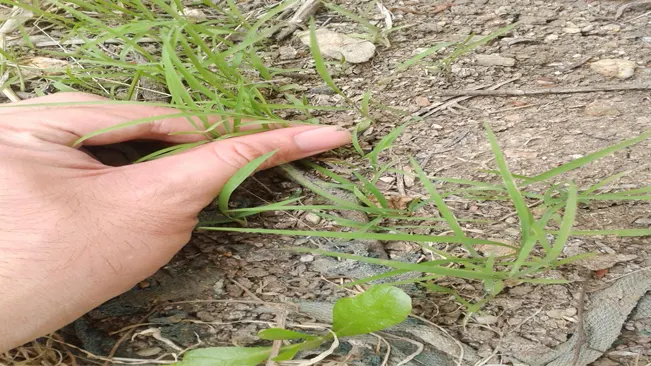
- Regular Weeding: Regular weeding is crucial, especially in the early stages of growth. Weeds compete with peanuts for nutrients, water, and light.
- Gentle Cultivation: When weeding, be gentle to avoid disturbing the peanut plants’ roots. Disturbance can affect the plant’s growth and pod development.
- Mulching: Using organic mulch can help suppress weed growth, conserve soil moisture, and add organic matter to the soil.
- Herbicides: If necessary, use herbicides that are safe for peanuts. Always follow the manufacturer’s instructions and precautions.
Harvesting Peanuts
When to Harvest
Timing is crucial in the harvesting of peanuts. As you mentioned, the key indicators for harvesting peanuts include:
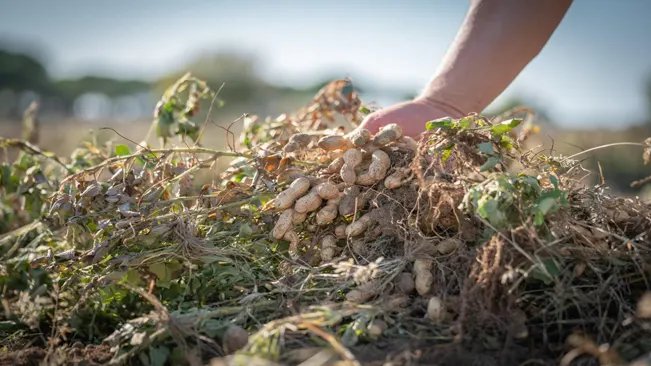
- Leaf Color Change: The leaves of the peanut plants begin to yellow, signaling that the peanuts are reaching maturity. This color change is a primary visual cue.
- Shell Appearance: The shells of the peanuts develop a veined, golden-brown pattern. To check this, you can gently unearth a few peanuts and observe the pattern on their shells.
- Duration of Growth: Typically, peanuts are ready for harvest 4 to 5 months after planting. However, this can vary depending on the peanut variety and growing conditions.
Harvesting Process
Harvesting peanuts is a delicate process that requires careful handling to avoid damaging the pods. Here’s a step-by-step guide:
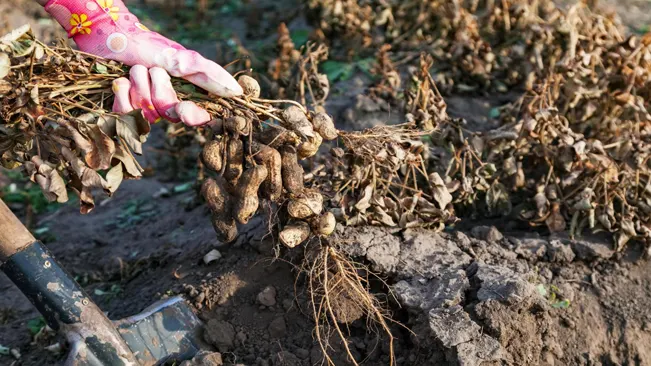
- Loosen the Soil: Use a fork or shovel to gently loosen the soil around the peanut plants. This helps in easing the plant out of the ground without breaking the pegs (the stems that hold the peanuts).
- Uproot the Plant: Grasp the base of the peanut plant and gently lift the entire plant out of the ground. It’s important to bring up as much of the root system as possible, as the peanuts are attached to these roots.
- Shake Off Soil: Once the plant is lifted, gently shake it to remove excess soil. Be careful not to detach the peanuts from their pegs.
- Curing Peanuts: After harvesting, the peanuts need to be cured. This process involves drying the peanuts to reduce their moisture content for storage.
- Hang the Plants: Hang the peanut plants in a warm, dry, and well-ventilated area. This could be a shed, garage, or any other space safe from moisture and direct rain.
- Duration of Curing: The curing process typically takes several days. During this time, the peanuts dry out, and their flavor becomes more pronounced.
Storing Peanuts
Curing Peanuts
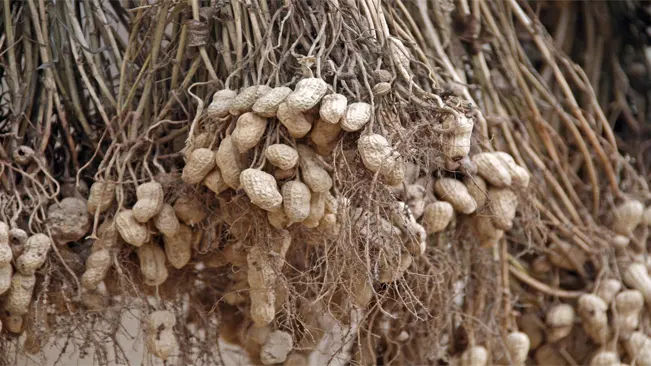
- Process: After harvesting, peanuts need to be cured. Curing involves drying the peanuts to reduce their moisture content. This is done by hanging the harvested plants in a warm, dry, and well-ventilated area for several days. The ideal curing conditions involve temperatures around 80°F (27°C) with low humidity.
- Purpose: Curing helps in preserving the peanuts and enhances their flavor. It also makes the peanuts easier to shell.
Shelling Peanuts
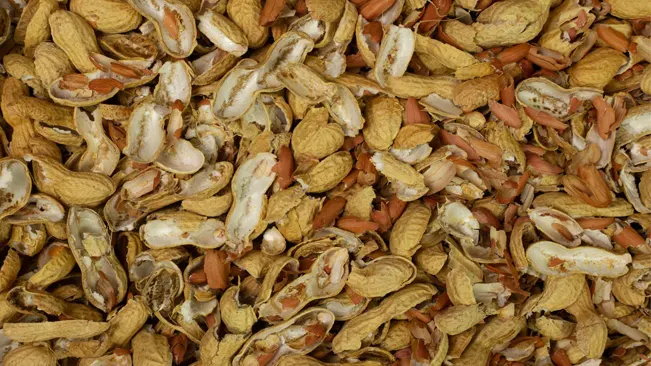
- After Curing: Once the peanuts are cured, you can remove the shells. This can be done by hand or with a mechanical sheller for larger quantities.
- Inspecting: It’s important to inspect the peanuts and discard any that show signs of mold, discoloration, or damage.
Storing Unshelled Peanuts
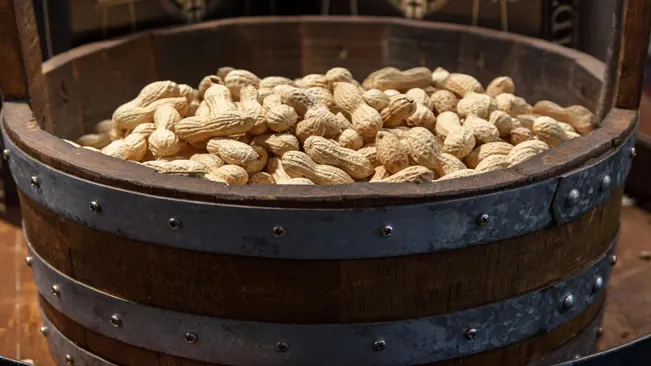
- Conditions: Unshelled peanuts can be stored in a cool, dry place. An ideal storage location is somewhere that maintains a consistent temperature and is away from direct sunlight.
- Containers: Use breathable containers like mesh bags or baskets to allow air circulation.
Storing Shelled Peanuts
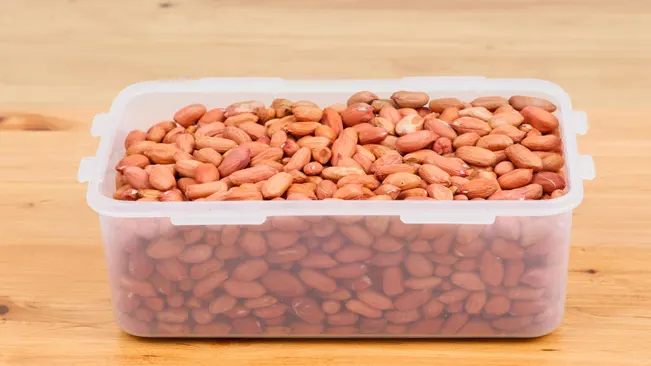
- Refrigeration: Shelled peanuts should be stored in an airtight container in the refrigerator. This helps in preventing the oils in the peanuts from going rancid.
- Freezing: For long-term storage, you can freeze shelled peanuts in airtight containers or freezer bags.
Roasting Peanuts
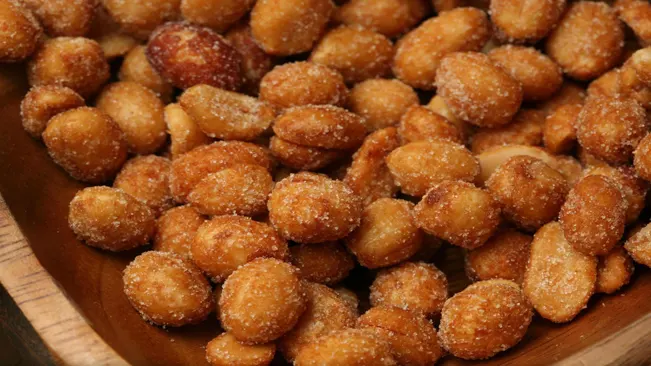
- Flavor Enhancement: Roasting peanuts enhances their flavor and makes them a delightful snack.
- Methods: You can roast peanuts in the oven, on a stovetop, or even in a microwave. Typically, roasting in an oven is done at around 350°F (175°C) for 15-20 minutes, depending on the quantity and desired level of roast.
- Storage After Roasting: Once roasted, let them cool and then store them in an airtight container. Roasted peanuts can be kept at room temperature for up to a month, in the refrigerator for up to three months, or frozen for up to six months.
Monitoring Peanuts During Storage
- Check Regularly: Regularly check the peanuts for any signs of spoilage like mold or an off smell.
- Humidity Concerns: Ensure that the storage area does not become too humid, as this can cause the peanuts to become moldy.
Pests and Diseases
Pests that Affect Peanuts
- Aphids: These small, sap-sucking insects can cause damage by feeding on the foliage and stems. They can also spread viruses. Control measures include using insecticidal soaps, neem oil, or other organic pesticides. Encouraging natural predators like ladybugs can also help.
- Spider Mites: These tiny pests can cause yellowing and speckling of leaves. They thrive in hot, dry conditions. Miticides and maintaining adequate moisture can help control them.
- Thrips: Thrips scrape the surface of leaves and flowers, causing discoloration and deformities. Insecticidal soaps or neem oil are effective organic treatments.
- Cutworms and Armyworms: These caterpillars feed on peanut plants, often cutting off young plants at the soil line. Using bait with Bacillus thuringiensis (Bt) or other organic pesticides can be effective.
- Nematodes: These microscopic worms attack the roots, hindering plant growth. Crop rotation and using nematode-resistant varieties can help manage this problem.
Diseases in Peanuts
- Leaf Spot: Caused by fungi, leaf spot diseases such as early leaf spot and late leaf spot can lead to defoliation and reduced yields. Management includes using fungicides and practicing crop rotation. Resistant peanut varieties can also be planted.
- Root Rot: This can be caused by various fungi, leading to decay of roots and lower stems. Good drainage, proper irrigation management, and rotating with non-host crops can help prevent root rot.
- Stem Rot (White Mold): This fungal disease causes wilting and white mold on stems and pods. It thrives in moist conditions. Crop rotation, proper spacing for air circulation, and fungicides can help manage stem rot.
- Peanut Rust: This appears as orange pustules on leaves and can significantly reduce photosynthesis and yield. Fungicides can be used for control.
- Tomato Spotted Wilt Virus (TSWV): Transmitted by thrips, this virus causes stunted growth and ring spots on fruits. Managing thrips and using resistant varieties are key to controlling TSWV.
Conclusion
Growing peanuts successfully requires careful attention to soil preparation, planting, and maintenance. Optimal conditions include warm, sunny weather, well-drained soil, and regular watering without over-saturating. Effective management of pests and diseases is crucial, and can often be achieved through organic methods and crop rotation. With patience and proper care, growing peanuts can yield a rewarding and nutritious harvest, making them a valuable addition to any home garden.
FAQs (Frequently Asked Questions)
- What is the best time to plant peanuts?
Plant peanuts after the last frost in spring, when the soil temperature reaches at least 65°F (18°C). - What type of soil do peanuts prefer?
Peanuts grow best in well-drained, sandy loam soil with a pH between 5.9 and 7.0. - How deep should peanuts be planted?
Plant peanuts about 2 inches deep, spacing them 6 to 8 inches apart in rows that are 24 to 36 inches apart. - How much water do peanut plants need?
Provide 1 to 1.5 inches of water per week, ensuring consistent moisture especially during pod formation and development. - Do peanuts require a lot of sunlight?
Yes, peanuts need full sunlight for optimal growth, requiring a minimum of 6 hours of direct sunlight daily. - What are common pests and diseases that affect peanuts?
Common issues include aphids, spider mites, leaf spot, and root rot. Organic pesticides and crop rotation can help manage these. - How long does it take for peanuts to grow?
Peanuts typically require a growing season of 4 to 5 months, depending on the variety. - When is the right time to harvest peanuts?
Harvest when the leaves turn yellow and the peanuts’ inner shells have a golden-brown appearance. - How should peanuts be harvested?
Carefully dig up the entire plant, shake off the excess soil, and hang the plants to dry for several days. - Can I grow peanuts in a container?
Yes, peanuts can be grown in large containers with sufficient depth and good drainage, although yield may be lower than in open ground.

Kristine Moore
Forestry AuthorI'm Kristine Moore, a seasoned garden landscaping professional with over 30 years of experience. My extensive career has been dedicated to transforming outdoor spaces into stunning, sustainable landscapes. With a deep understanding of horticulture, design principles, and environmental stewardship, I have become a respected figure in the field, known for creating harmonious, visually appealing, and eco-friendly gardens. My commitment to excellence and continuous learning in landscaping trends and techniques has solidified my reputation as an expert in garden design and implementation.


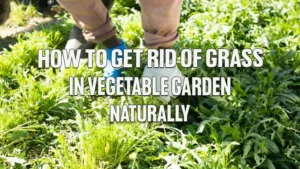







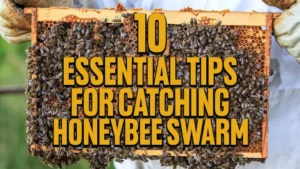
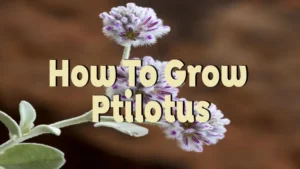

Leave your comment